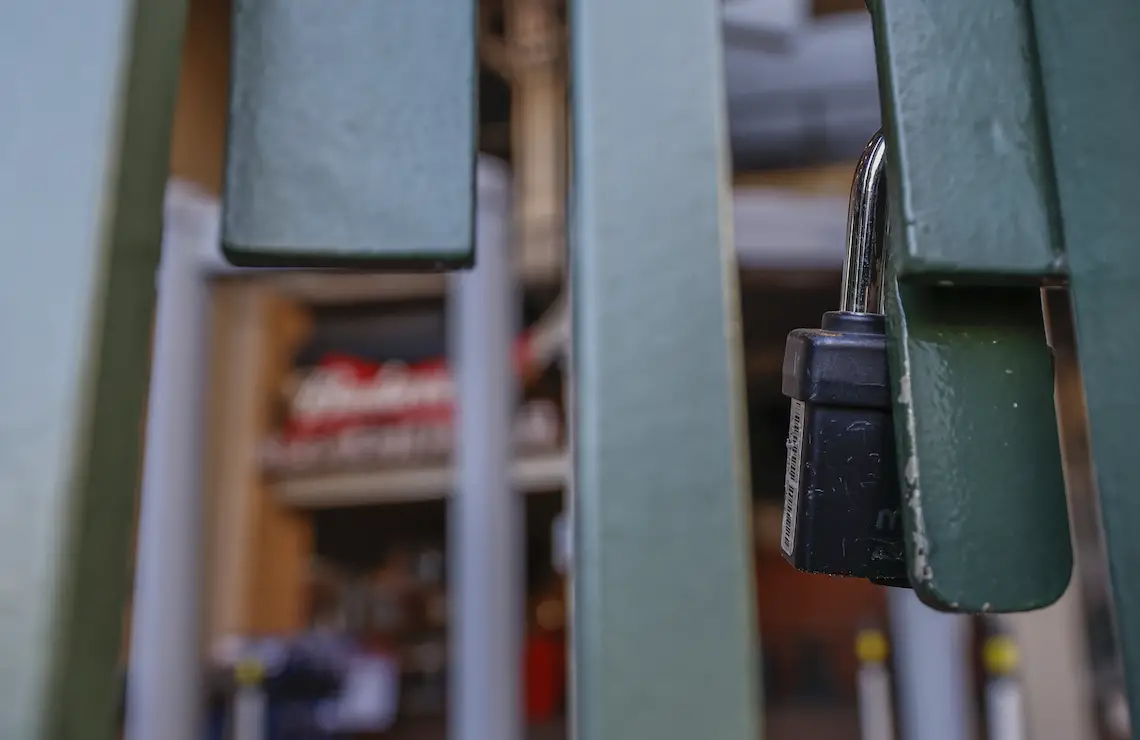
Kamil Krzaczynski/USA TODAY Sports
Each passing day brings us closer to Major League Baseball’s 2022 season. Fans are eager to see their teams back on the field in the coming weeks.
But a standoff between the MLB and the MLB Players Association (MLBPA) puts all that in jeopardy. If a decision isn’t reached soon, the MLB has threatened to postpone or cancel games.
It’s all due to the infamous MLB lockout that has taken hold of the league since last year when the previous collective bargaining agreement expired. And although it’s the first offseason lockout in Major League Baseball, the pressure is really on now that spring training is about to ramp up and Opening Day is just around the corner.
Owners vs. players
The current lockout started on December 2, 2021. As the old collective bargaining agreement expired, the team owners and players weren’t able to settle on a new one.
Without a new agreement in place, owners feared a possible players’ strike during the 2022 season. Their solution? Lock them out before they can strike. The vote was unanimous among the 30 owners.
This defensive tactic drew a lot of criticism. For one, many saw it as a strategy to fracture the MLBPA.
Furthermore, the league didn’t even make a first proposal for six weeks, which is part of the reason why there’s so much pressure on now. With the season getting closer and closer, negotiations have taken on a high-stakes feel.
The players rejected the first proposal and eventually asked for the assistance of a federal mediator to help resolve things. In mid-February, spring training start dates were postponed, but MLB commissioner Rob Manfred struck an optimistic tone that a deal would be done in time for the season’s start.
Over the last week, that optimistic outlook has certainly taken a hit. The two sides met every day, but still couldn’t come to an agreement.
The MLB imposed a deadline of February 28 before starting to cancel regular season games. But after 16 hours of talks, things were still unresolved.
Now, the deadline is March 1, and baseball fans wait with bated breath to find out whether a new agreement will be made by the end of the day.
Main points of contention in the MLB lockout
So, what’s really at stake in the MLB lockout? The three biggest things that still need to be settled are:
- Minimum salary: The players want the salary boosted up to $700,000+, but the MLB has only offered $675,000.
- Bonus pool: Players want a new bonus pool for players who aren’t eligible for arbitration yet. MLB says they would agree to it, but at a much smaller scale than the MLBPA would like.
- Competitive Balance Tax: Also known as CBT, this luxury tax serves as an alternative to a salary cap by limiting the total amount a team can spend on their roster of players. Players want to raise the CBT threshold while owners want to keep it low.
Those are the sticking points, but a number of other collective bargaining issues have also been discussed, including free agency, draft pick compensation, service time restrictions, postseason length and designated hitter rules.
Past MLB strikes and lockouts
While there’s certainly plenty of drama in this year’s lockout, it’s not the first time that a work stoppage has caused an uproar in pro baseball. Here’s a look at some of the past strikes and lockouts in MLB history:
- April 1972 strike: A two-week strike over the players’ pension resulted in the cancellation of 86 regular-reason games, which were not made up later. This was the MLB’s first-ever players’ strike.
- February 1973 lockout: Similar to today’s situation, the first owner lockout occurred after an old collective bargaining agreement expired. Spring training was delayed, but regular season games went on as scheduled.
- March 1976 lockout: The players’ union won the right to free agency in this landmark lockout. No regular season games were cancelled.
- April 1980 strike: This short strike lasted only about a week as collective bargaining agreement negotiations took place.
- Summer 1981 strike: Lasting from June 12 through July 31, this strike over free agent compensation resulted in over 700 games being cancelled. This was one of the most contentious work stoppages in MLB history.
- August 1985 strike: In a small two-day strike, players and owners negotiated pension and salary issues. All cancelled games were made up later.
- Winter 1990 lockout: Owners once again locked out players over free agency issues, this time along with disagreements over salary arbitration. It lasted over a month, pushing back spring training and Opening Day.
- 1994-1995 strike: This was the big one — a 232-day strike that entirely upended the season, causing the loss of 938 regular season games and the 1994 World Series. A National Labor Relations Board complaint and injunction was eventually issued to end the strike.
It’s been almost 30 years since that last work stoppage. Will it end today, or drag on for additional days, weeks or (gulp) months? We’ll find out soon.